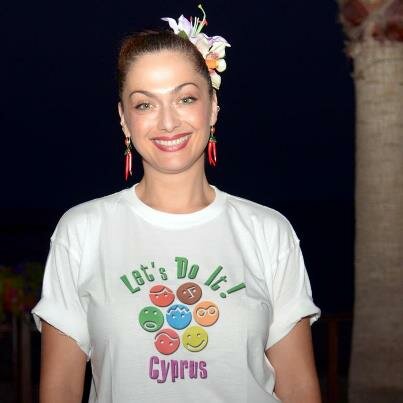 Tonia Buxton will be supporting Lets DoIt Cyprus clean-up on 29th September. Green Cyprus will also be part of this campaign as we recently announced. We will be cleaning up part of Dasoudi Beach in Limassol which some of you may remember as being the subject of a recent discussion on our page. We would like to round up about 10 volunteers to help us on the day. Interested? We’d love you to help! Let us know if you’d like to join the team….
Tonia Buxton will be supporting Lets DoIt Cyprus clean-up on 29th September. Green Cyprus will also be part of this campaign as we recently announced. We will be cleaning up part of Dasoudi Beach in Limassol which some of you may remember as being the subject of a recent discussion on our page. We would like to round up about 10 volunteers to help us on the day. Interested? We’d love you to help! Let us know if you’d like to join the team….
 Tonia Buxton will be supporting Lets DoIt Cyprus clean-up on 29th September. Green Cyprus will also be part of this campaign as we recently announced. We will be cleaning up part of Dasoudi Beach in Limassol which some of you may remember as being the subject of a recent discussion on our page. We would like to round up about 10 volunteers to help us on the day. Interested? We’d love you to help! Let us know if you’d like to join the team….
Tonia Buxton will be supporting Lets DoIt Cyprus clean-up on 29th September. Green Cyprus will also be part of this campaign as we recently announced. We will be cleaning up part of Dasoudi Beach in Limassol which some of you may remember as being the subject of a recent discussion on our page. We would like to round up about 10 volunteers to help us on the day. Interested? We’d love you to help! Let us know if you’d like to join the team….
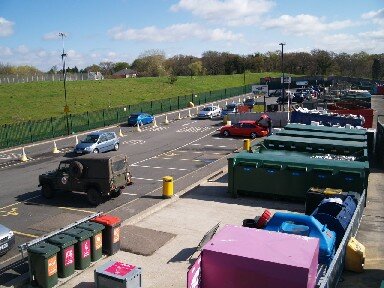 Anything you pour down your drain, sink or toilet can eventually end up in the sea (it’s harmful to aquatic life and us) so don’t be tempted to do it! Never dispose of liquids such as oils, grease or hazardous liquids like paint thinners or unused paint by pouring them down the drain. Instead, collect them in one box and dispose of them with the rest of your waste. Keep them all in their individual packaging to avoid possible chemical reactions and where possible, take them to your community collection point. See our Recycling Section for further details.
Anything you pour down your drain, sink or toilet can eventually end up in the sea (it’s harmful to aquatic life and us) so don’t be tempted to do it! Never dispose of liquids such as oils, grease or hazardous liquids like paint thinners or unused paint by pouring them down the drain. Instead, collect them in one box and dispose of them with the rest of your waste. Keep them all in their individual packaging to avoid possible chemical reactions and where possible, take them to your community collection point. See our Recycling Section for further details.
 Now that the school summer holidays are drawing to an end and the days are getting shorter, many children and parents are starting to get ready to go back to school. Going back to school is an exciting time because everything’s new; teachers, fellow students, books and miscellaneous supplies. However, before setting off for the shops, take stock and think twice about jumping on the ‘back to school’ bandwagon.
Now that the school summer holidays are drawing to an end and the days are getting shorter, many children and parents are starting to get ready to go back to school. Going back to school is an exciting time because everything’s new; teachers, fellow students, books and miscellaneous supplies. However, before setting off for the shops, take stock and think twice about jumping on the ‘back to school’ bandwagon.
Even though it happens every year, we still seem programmed to equate going back to school with buying loads of new things. And, while schooling requires supplies, we too often turn to disposable supplies to do the job such as pens, countless numbers of which are thrown away every year. Plus, going back to school offers a clean slate for a fresh start like “This year I promise myself to consistently pack my own lunch instead of buying from the tuck shop.” Or, “This year I’m going to get a brand new school bag”. Sound familiar? These resolutions require more resources in every respect. It’s not very green to buy unnecessary, duplicate equipment or extra items of school uniform if they are not really needed, nor does it help your bank account!
Preparation is of course important, but so is following your green preparation with green behaviour and extending your good green start to behaviour that lasts all year. For example, did you know that every 220,000 sheets of paper that is recycled saves approximately 17 trees? Vast amounts of paper are disposed of every year so purchasing post-consumer recycled paper, and making sure that it gets recycled again, can make a big difference. It’s a challenge to properly equip our children with supplies for another year of learning without virtually bankrupting ourselves and polluting our planet’s resources in the process!
So, how do you combine school’s three R’s; reading, writing and ‘rithmetic with the planet’s three R’s of reduce, reuse, and recycle? Here are some tips on how to get your child off to a good green start to the new school year:
Get off to a Good Green Start. Before hitting the shops in search of back to school gear, ask yourself some questions. Do you really need that new school bag if last year’s is still in reasonable enough condition and does the job? Do you really need a new ruler (the measurements haven’t changed over the summer!) or a complete set of new pens? Make a list of what you absolutely know you need, what you think you might need, and what you want, and carefully consider which items go in which section of the list. Once your list is made, it’s time to…
Take Inventory and Avoid Duplicates. Once you’ve got yourself in “green back to school mode” most of us will be faced with the reality that getting ready to go back to school requires new equipment; school supplies, clothes, backpacks, etc, but this is not always necessary. Take a careful inventory of what you already have that can be used again; think more durable items, like clothes and shoes and what you might already have lying around the house that is still waiting to be used for the first time such as extra packs of pencils, notebooks, etc. Avoid last-minute impulse purchases by making a list of what you need (and sticking to it!) before you head to the shops. Similar green practices can also be adopted with text books. Some schools have now adopted a policy of handing down text books to the forthcoming class. That makes perfect sense in every way. Why buy again when last year’s books are perfectly good to use again? Following these steps will save materials and your money.
Find Green Clothes. A lot of money spent on back to school shopping goes into buying clothes, but if you don’t already, why not consider using hand-me-downs instead? That is either from older siblings or from your children’s school sales/ charity fairs where good-quality used items of uniform are available for a fraction of their cost new. It’s good to recycle, it saves on resources and once again, it will save you money.
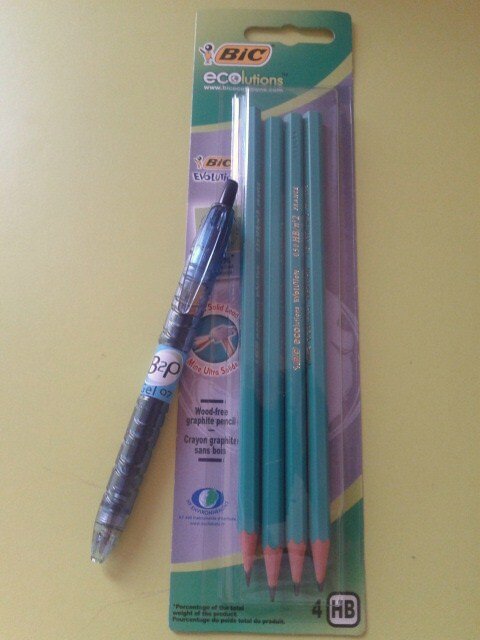 Choose Greener Pens and Pencils. It’s time to say goodbye to package upon package of disposable pens and pencils and replace these with recycled and/or biodegradable versions of each. Once you have greener options in hand, encourage your youngsters to hang on to each pencil and pen as long as possible and use last year’s school supplies where possible. There are many companies specialising in green writing implements, some greener than others but some of these may be harder to get hold of in Cyprus. However, we found a good recycled pen by Pilot called B 2 P (Bottle to Pen) pens which as the name implies were originally plastic bottles. We also found coloured pencils by Staedtler which are made out of wood from sustainable sources and there is also a greener version that are made from a wood-free alternative. If you are after “regular lead pencils”, then there are BIC’s ecolutions which are 57% recycled and once again, are wood-free. All these items are reasonably priced and we found these specific items in Alphamega hypermarket.
Choose Greener Pens and Pencils. It’s time to say goodbye to package upon package of disposable pens and pencils and replace these with recycled and/or biodegradable versions of each. Once you have greener options in hand, encourage your youngsters to hang on to each pencil and pen as long as possible and use last year’s school supplies where possible. There are many companies specialising in green writing implements, some greener than others but some of these may be harder to get hold of in Cyprus. However, we found a good recycled pen by Pilot called B 2 P (Bottle to Pen) pens which as the name implies were originally plastic bottles. We also found coloured pencils by Staedtler which are made out of wood from sustainable sources and there is also a greener version that are made from a wood-free alternative. If you are after “regular lead pencils”, then there are BIC’s ecolutions which are 57% recycled and once again, are wood-free. All these items are reasonably priced and we found these specific items in Alphamega hypermarket.
Don’t be a Paper Pusher. Although many kids are internet masters, e-mailing homework has yet to happen in most schools where paper is still king for taking notes, writing papers, and of course, doing homework. But that doesn’t mean that you or your child can’t take steps to cut down your paper consumption. Buy products with the highest percentage of post-consumer recycled content possible, that is processed chlorine free (PCF) for use in school. Next, use these products to their maximum efficiency by printing on both sides of the paper, using paper already printed on one side for drafts (or better yet editing all drafts in the computer itself), and filling notebooks from cover to cover before purchasing a new one. And it never hurts to ask teachers if you can email in your work although this is more likely to apply to older students. Finally, if you need to buy binders to hold all those papers, buy cardboard binders instead of plastic.
Beware the Miscellaneous Supply Overload. Bigger items, like backpacks and items that don’t get used every day, like glue sticks, coloured pencils, and markers, are still necessary in many cases, but, because they either last longer or usually don’t get used every day, for example, art supplies, you don’t need them in the larger quantities typical of printer paper, pencils, and pens. Don’t be tempted by the better deal on six bottles of glue if you know you’ll only need three bottles between now and next spring. If it doesn’t have to come out of the backpack every day, think twice about loading up at the beginning of the year.
Think Outside the Lunch-Box. Don’t use bags; instead opt for a washable, reusable container to take your lunch to and from school. Just make sure to avoid vinyl lunch boxes which have been shown to contain harmful levels of lead. Instead, invest in a PVC-free or stainless steel lunch box. Instead of using bags and plastic film wrap for sandwiches and snacks, use reusable plastic containers and unbleached parchment paper for wrapping up your snacks. For drinks, beware of plastic bottles which may contain Bisphenol A (BPA), a hormone-disrupting chemical. Instead go with stainless steel ones such as the ones by Rainbow Products (see our Green Directory) which come in kid-friendly sizes and designs.
Don’t Start a Food Fight. When it comes to the actual food that goes in the lunch box, pack healthy green lunches kids will want to eat, and get them involved in choosing lunch ingredients, since they’ll be less likely to throw away things they want to eat. Forget packs of crisps and sugar-laden cereal bars. Apples, oranges, bananas, and other fruit are healthy, waste-free snacks that come with their own compostable wrapping. Send them in with fruit or vegetable sticks and a couple of slices of cheese and buy organic whenever possible. See our earlier blog “What’s up with our kids diets” for healthy lunchbox ideas.
Walking, Biking, Busing: Green Transportation to School. Going green while getting back and forth to school offers a familiar refrain: human power, walking or biking is best; riding the bus is next; driving alone is last. If you don’t live close enough to walk, finding a safe bicycle route to school is a green way to go, too. Beyond that, even though most school buses get single-digit km to the litre, they can also hold a large number of youngsters, making them a cleaner option than single-occupancy cars. If walking, biking, or busing aren’t in the cards, and admittedly in Cyprus many roads are unsafe especially for biking, and it can get too hot in the summer months, think about dividing the ride and start a parent carpool.
Do all This ALL Year. Making your back to school experience greener is a great way to start the year, and a great way to make progress toward a sustainable lifestyle, but there’s no reason to stop after the year has just started. Apply the lessons you’ve learned preparing to go back to school to other parts of your life outside school, and, when it comes time to re-supply, follow the tips to stay prepared, organised and green.
Most of us as parents probably do in fact make fairly reasonable decisions when we send our children back to school but a check-list on ‘adopting green practices” is a good way to remind us of the best, most economical, sensible and greenest way to start the new school year.
Even small changes you and your children make towards a greener ‘back to school’ approach, this will contribute positively to the bigger picture by saving on resources, helping the environment, improving your children’s health and ultimately saving you money. And don’t forget, these days, being green is cool! Why not tell your kids to share green ideas with their friends? (online via Facebook of course – it’s greener!).
Two good pieces of news as reported by the press this week relate firstly to a Net-Metering pilot scheme and secondly to a Nation-wide Tree Planting Project.
The planned net-metering pilot scheme will allow households to produce their own electricity and feed power back into the national grid. This is expected to be launched early next year. The scheme will initially involve choosing 125 households and it will take around 3 – 4 months to install the photo-voltaic systems.
The aim is to implement an islandwide net-metering policy and begin fixing all homes that wish to get connected with the system in 2014. Net metering provides credit to consumers with solar photo-voltaic systems for the full retail value of the electricity their system generates. In addition it will help Cyprus during the current energy struggle.
Although installation will cost each household a fairly hefty €6,000, that’s just around 6/7 bi-monthly electricity bills for a lot of us, so it has to be worth it in the long-run! Let’s see….The adoption of net-metering is an effective way of promoting renewable energy sources. We have year-round sun too so it makes obvious sense.
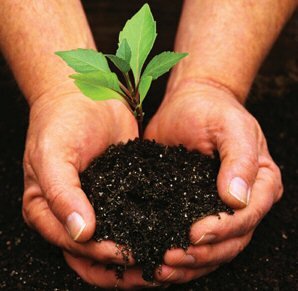 Also good news on the environmental-front is the Commissioner of the Environment, Charalambos Theopemptou’s plans to launch an island-wide tree planting campaign by encouraging every single person in Cyprus to plant one or two trees until we have reached one million trees. This is a great idea, not only for the environment in Cyprus as it will help make the place look a whole lot prettier and greener, but to counteract the negative effects of global warming. If you plant trees, it helps clean the air and cool the globe.
Also good news on the environmental-front is the Commissioner of the Environment, Charalambos Theopemptou’s plans to launch an island-wide tree planting campaign by encouraging every single person in Cyprus to plant one or two trees until we have reached one million trees. This is a great idea, not only for the environment in Cyprus as it will help make the place look a whole lot prettier and greener, but to counteract the negative effects of global warming. If you plant trees, it helps clean the air and cool the globe.
Green things are happening in Cyprus! That’s not only good for our environment but the economy as a whole as we begin to see the positive repercussion of these actions on the island in the near future.
 Furniture polishes are petroleum distillates which are flammable and have been linked with skin and lung cancer. They also contain nitrobenzene, a chemical that is highly toxic and easily absorbed through the skin.
Furniture polishes are petroleum distillates which are flammable and have been linked with skin and lung cancer. They also contain nitrobenzene, a chemical that is highly toxic and easily absorbed through the skin.
The manufacturers are smart. With their ‘natural’ aromas and ease of use, it’s easy not to give it a second thought before having a quick spray and dust to spruce up your furniture.
Don’t pollute your body, your home and the atmosphere! Green Cyprus recommends seeking out natural, chemical-free alternatives instead.
It does makes you think though that since we produce an abundance of bee-products in Cyprus, honey and beeswax, etc, wouldn’t producing a natural Cyprus beeswax furniture polish be a good business idea for someone? However, if anyone knows of anyone who is already doing it, please let us know so we can contact them and include them in our Green Directory.
 The banana industry is dominated by 5 international companies whose operations are so huge they dwarf the export revenues of all the banana-producing countries combined. The social and environmental cost of producing bananas is huge, and has brought misery to thousands. Indigenous people have been driven out of their lands to make way for new uncontaminated plantations, workers earn as little as US$1 a day in some countries and unionised labour is blacklisted. Worse, thousands of tonnes of toxic pesticides are poured on the plantations often sprayed from planes overhead.
The banana industry is dominated by 5 international companies whose operations are so huge they dwarf the export revenues of all the banana-producing countries combined. The social and environmental cost of producing bananas is huge, and has brought misery to thousands. Indigenous people have been driven out of their lands to make way for new uncontaminated plantations, workers earn as little as US$1 a day in some countries and unionised labour is blacklisted. Worse, thousands of tonnes of toxic pesticides are poured on the plantations often sprayed from planes overhead.
With bananas, it’s the cultivation that’s the problem. When they are grown on a large monocultural scale, big companies looking to maximise profits, are liberal with giving disease-prone banana plants major doses of agrochemicals. In addition, the banana bunches themselves are often wrapped on the tree with pesticide-coated plastic bags for protection. Five of the chemicals used on bananas are classified as ‘extremely hazardous’ by the World Health Organisation and 3 organophosphate pesticides are applied that are not approved for use in the UK. On large plantations, more money is spent by the growers on agrochemicals than workers’ wages.
Green Cyprus advises against buying ‘any old bananas’ – you know the ones that are generally available in the supermarkets and fruit sellers. Instead, opt for the smaller, sweeter variety of Cyprus bananas when they are in season, which are grown on a much smaller scale and are therefore likely to be contaminated with lower levels of agrochemicals. Even better, the health shops sell organic Cyprus bananas too when they are in season! Above all and very importantly, you will be supporting the local economy!
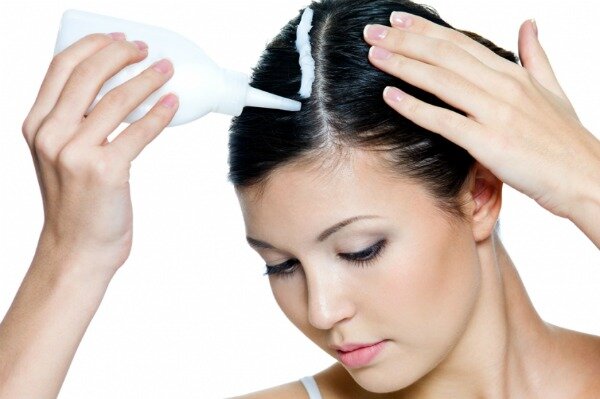
Hair dye uses harsh chemicals including ammonia, peroxide, p-Phenylenediamine or diaminobenzene and research has shown that repeatedly dying hair, especially dark brown or black which contain greater levels of chemicals than lighter colours, can increase the chance of developing some cancers such as non-Hodgkin’s lymphoma, multiple myeloma and cancer of the bladder.
It is also possible to suffer from allergic reactions to hair dyes. The most common allergic reactions to hair dye chemicals are dermatitis of the eyes, ears, scalp and face, which may include a rash, extreme swelling and a severe burning sensation on the scalp.
There has also been concern about the mixing of hydrogen peroxide with ammonia. Once again, research has found that this combination may create potentially carcinogenic chemicals that don’t normally exist in the two liquids prior to mixing them together.
This subject is well documented and there is plenty of information available on the internet should you require more in-depth information but Green Cyprus has summarized the dangers briefly and to the point. So, are there any safer alternatives? How green can your hair colour be? Well, there are various shades….
The safe alternatives for hair colouring can be categorised as safer and safest. The industry has taken out some of the chemicals by producing semi-permanent colouring. However, these products still usually contain p-Phenylenediamine as well as hydrogen peroxide and resorcinol. Although the amount of chemicals is of a lesser degree and may be less hazardous, there is still no evidence to back this up. Since the darker the hair colouring, the more problematic, it is also safer to go blonde or use highlighting only. Whatever is used, it has been recommended to drink a litre of water afterward to help flush out the toxins.
Safer alternatives to ammonia and peroxide are being developed. One hairdressing company that I used to frequent when I lived near London was Daniel Field Organic & Mineral Hairdressing who found a way of making ammonia and peroxide from ingredients such as seaweed, coconut oil and avocado oil which are far less irritating to the skin and have no nasty smell. Daniel Field has an online shop from which you can purchase his organic hair colours
Aveda, another Green Cyprus favourite is another company that offers safer hair-colouring solutions. Anyone who has tried their hair products (and beauty products too) will know that as well as being effective, they also smell divine. So if you’re planning a holiday to the UK or US, book yourself an Aveda colour appointment. Expensive but worth it!
There are safer alternatives that so far produce no health concerns. You can use vegetable-based rinses. These substances do not penetrate the hair shaft, plus they give the hair more shine and make it feel thicker and fuller. The coating action may also aid in protecting the hair from environmental elements such as sun, salt, chlorine and assorted pollutants. Safety tests have found that these rinses contain the least amount of synthetic chemicals of any hair dyes. The down side is that the effect is short-lived, lasting only a few weeks.
Many people have tried henna as a solution. Henna’s effect lasts longer than a vegetable rinse and adds a wonderful shine, highlights and bounce to the hair. Henna enhances your natural colour rather than totally covering it, which allows some of your natural highlights to come through. The coating and sealing advantages mentioned above are inherent with henna.
Finally, the safest and greenest although admittedly not the most effective in terms of permanent colour change are the use of natural products to enhance your natural colour such as coffee or sage to darken and tea, chamomile or saffron to lighten.
What’s available in Cyprus? In terms of do-it-yourself kits, safer colouring with reduced chemicals can be achieved with Apivita’s extensive range of colour kits which are generally available at pharmacies. Also available are Herbatint and NatureTint from health shops which are also ammonia and resorcinol-free.
As for hairdressers, I am not aware of any ‘organic’ hair salons such as Daniel Field or Aveda in Cyprus although I believe there may be one or two out there e.g. Azzuro, Larnaca, that offer a ‘greener’ service with vegan products and use kinder vegetable colourants. If anyone knows of any others that might fit the bill, please let us know so that we can contact them to check. Alternativley, ask them to contact us.
Organic Care Kids Shampoo & Conditioner
Author: Green Cyprus // Category: Green Cyprus Loves....jpg) Green Cyprus loves this new kids shampoo and conditioner; Organic Care, which we found in All Organic, Limassol. Free from sls, parabens and petro-chemical cleansers as well as being cruelty-free, this Australian brand not only smells divine, it IS really good! So good in fact, I’ll be trying out the adult range myself – there’s a large variety to choose from for your hair’s needs. Priced around 6.50 euros, it’s a fairly large bottle so in our opinion, well worth it.
Green Cyprus loves this new kids shampoo and conditioner; Organic Care, which we found in All Organic, Limassol. Free from sls, parabens and petro-chemical cleansers as well as being cruelty-free, this Australian brand not only smells divine, it IS really good! So good in fact, I’ll be trying out the adult range myself – there’s a large variety to choose from for your hair’s needs. Priced around 6.50 euros, it’s a fairly large bottle so in our opinion, well worth it.
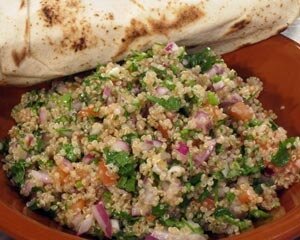 Here’s a simple salad recipe which is quick to make:
Here’s a simple salad recipe which is quick to make:
Ingredients:
200 g organic quinoa
2 large, ripe organic tomatoes
large bunch fresh organic parsley, leaves only, finely chopped
small bunch fresh mint leaves, finely chopped
1 small organic onion, finely chopped
2-3 tbsp lemon juice
2-3 tbsp organic extra virgin olive oil
sea salt, flakes
Method
1. Cook the quinoa according to packet instructions. Cook it like rice i.e. one part quinoa to 2 parts water. Takes about 15 minutes.
2. Make a small cross at the base of each tomato. Place the tomatoes in a heatproof bowl and cover with boiling water. Set aside for 30 seconds, then drain. When the tomatoes are cool enough to handle, peel off and discard the skins.
3. Dice the tomatoes and place in a serving bowl. Stir in the parsley, mint and chopped onion until well combined. Mix in the quinoa, then drizzle over the lemon juice and olive oil and season to taste with sea salt. Mix well to coat the ingredients in the dressing.
Optional: Green Cyprus suggests adding half a teaspoon each of organic paprika and turmeric for an extra kick and health benefits.
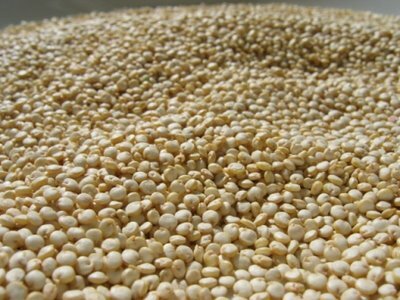 Quinoa is one of the most nutritional superfoods available and worth trying out if you haven’t already. Here’s some information…
Quinoa is one of the most nutritional superfoods available and worth trying out if you haven’t already. Here’s some information…
Quinoa is a protein-packed food with a nutty taste and chewy texture. It has a higher protein content than wheat, barley or other major grains. One cup of quinoa has 9 grams, which trumps the protein-rich egg (6 grams). Quinoa contains all 8 of the essential amino acids and is a complete protein and a low-cholesterol source of complex carbohydrates. Rich in fibre, it is digested slowly and has a low glycemic index, helping you steer clear of the blood-sugar roller coaster.
As a complex carbohydrate, quinoa acts an internal cleanser, easing the progress of food through the digestive tract. Used regularly in your diet, quinoa can help keep you free of constipation and bloating. Unlike more common grains such as wheat, quinoa is gluten-free and can be enjoyed by people with digestive disorders, like coeliac disease. This versatile seed can be used in breads, soups or other foods where grains are a primary ingredient, offering a steady source of colon-cleansing fibre. The vitamin B and folate in quinoa also help the liver in its role of eliminating wastes from the body, adding to its detoxifying properties.
Quinoa is also a source of plant-derived calcium. Calcium builds and maintains bones and teeth, helps regulate the contraction of the heart, and facilitates nerve and muscle function. One cup of cooked quinoa contains 30 milligrams of calcium and as well as impressive quantities of potassium, magnesium and zinc, minerals that are crucial for heart, nerve and muscle function.
Quinoa’s vitamin B content can help keep the mind sharp, maintain brain volume and stabilise mood. So many good reasons to include quinoa in your diet. If you haven’t tried it, time to give it a go! Available from healthshops and supermarkets.